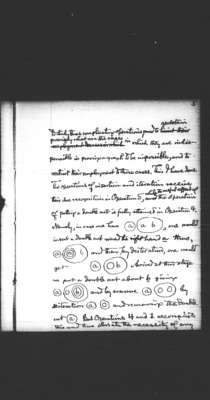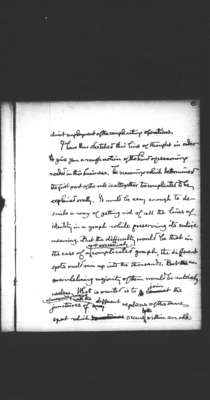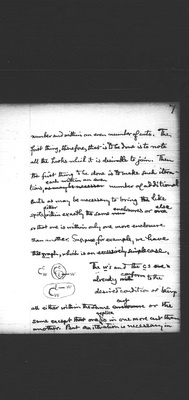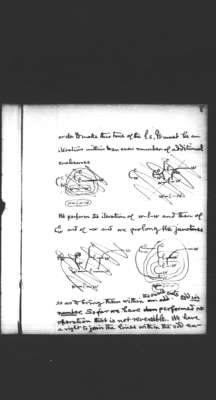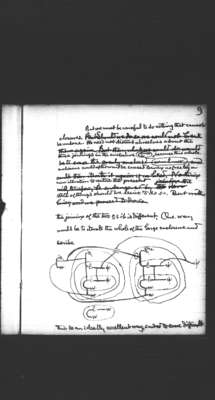Pages
6
5
to study these complicating operations, and to ascertain precisely what are the cases in which they are indispensible in proving a graph to be impossible, and to restrict their employment to these cases. This I have done. The operations of insertion and iteration receive their due recognition in Operation 5, while the useful effect of the operation of putting a double cut is fully attained in Operation 4. Namely, in case one has [a] [a b], one would insert a double cut round the right hand a thus, [a] [ a b ] and then, by deiteration, one would get [a] [ [ ] b ]. Arrived at this stage we put a double cut about b giving [a] [ [ ] b ] and by erasure [a] [ [ ] [ ] ] by deiteration [a] [ [ ] ] and removing the double cut [a]. But Operations 4 and 1 accomplish this and thus obviate the necessity of any
7
direct employment of the complicating operations.
I have thus sketched this line of thought in order to give you a rough notion of the kind of reasoning needed in this business. The reasoning which determined the first part of the rule is altogether too complicated to be explained orally. It would be easy enough to de scribe a way of getting rid of all the lines of identity in a graph while preserving its entire meaning. But the difficulty would be that in the case of a not excessively complicated graph, the different spots would run up into the thousands. But an overwhelming majority of them would be entirely useless. What is wanted is to join the junctures of corresponding [marks?] of all the different replicas of the same spot which occurs both within an odd
